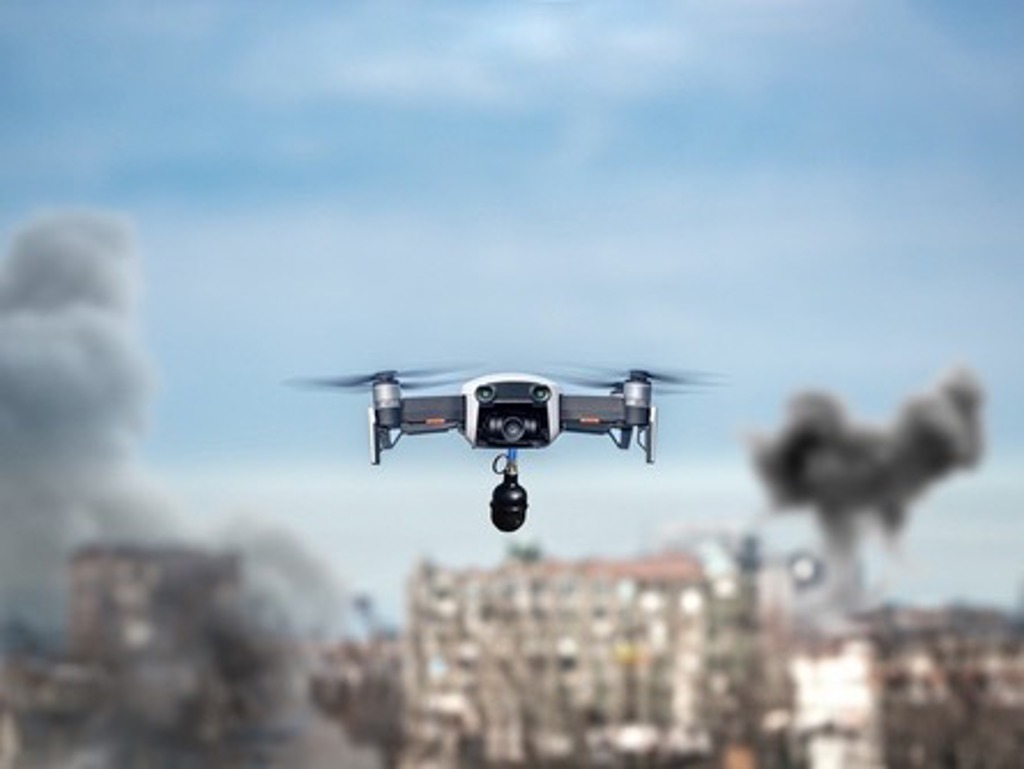As the war in Ukraine continues, the role of technology and innovation in Ukraine’s drone counterattack strategy is indispensable to counter the Russian invasion. While a technology arms race between Russia and Ukraine will pose an uphill battle for Ukraine to sustain, heightened multilateral aid for drone innovation may ensure Ukraine’s victory.
In the latter end of 2023, Ukraine’s commitment to drone development enabled significant milestones for the Ukrainian army, including the monumental sinking of Russia’s Black Sea Fleet, Tarantul, with the use of precise sea-borne and air-borne drones.
The beginning of 2024 has proven just as successful for Ukrainian forces, as drone attacks have reached further than ever in Russian territory, as seen during the attack on St. Petersburg’s Novatek, – Russia’s largest natural gas-producing plant. As recently as Jan. 25, Ukraine’s military has proliferated attacks on other relevant oil manufacturing plants across Russia, including Russia’s most prevalent oil production and refinery company, Rosneft.
While recent counter-defence developments in Ukraine’s favour highlight a defence strategy laser-focused on innovating drone technology, Russia is not far behind in reshuffling the current military strategy. The increased funding allocated for the Russian military, and the acquisition of Iranian “Shahed” Drones built to target Western-supplied defences used by Ukrainian forces, prove that Russia is not willing to come second in drone equipment.
The war fought by Ukraine deviates from traditional notions of military strategy, presenting itself as an unprecedented drone capacity arms race. If Ukraine is to preserve an upper hand against the Kremlin, allies and defence networks like NATO must reinforce economic and intelligence aid commitments long after the newness of the occupation wears off.
Ukrainian Drone Innovation
Since Russia’s invasion of Ukraine, the Ukrainian military has found resourceful mechanisms for defending Ukrainian territory, most notably in the production of low-budget, cutting-edge drone technology to deter Russian attacks.
“Drones have changed this war and warfare, as Ukrainians have bragged about online with highly produced videos, from small bombs dropped from drones to FPV, or first-person view, drones that can crash into military vehicles or fly through the back of disabled vehicles. Cheap drones destroy expensive equipment,” said Nick Schifrin from PBS News.
Interestingly, first-person-view drones are identified by commanders as one of the best weapons in Ukrainian arsenals, namely since they allow for heightened accuracy in striking Russian targets. Not only are FPV drones more apt for warfare in harsh weather conditions, but oftentimes, the technology is cheap to build, ranging from $250 to $400.
In the early months of the war, drone innovation was largely directed by grassroots organizations in Ukraine, with drone squads like the Asgard Group directing soldiers to counterattack expensive Russian drones and weapons with inexpensive FPV drones. As the leader of the Asgard Group claims, their team of engineers have destroyed over $80 million worth of Russian equipment through an investment of $700,000 in drone assembly and deployment.
The domestic assembly of several Ukrainian drones has proven to be a key factor in the diversification of weaponry for the Ukrainian forces, granting Ukraine an advantage in warfare against Russia. With over 80 companies manufacturing drones in Ukraine, the catalogue of available drones ranges from more popular models like the A1-CM Fury to less conventional models that are built with adaptability in mind over mass production. In contrast, Russia’s strategy for drone acquisition often has revolved around large-scale production, entailing that the models produced usually are able to target specific drone models, thus being less effective in combating Ukraine’s diverse drone weaponry.
Most recently, drone innovation in Ukraine has developed in the deployment of flocks of FPV drones orchestrated by a “queen” drone to aid Ukraine’s offence operations. When deployed, the queen drone leads ten other FVPs flying underneath to position, resulting in higher efficiency in combat and battery saving for all FVPS involved.
Western aid to secure Ukrainian dominance in the drone war
Though Ukraine has built a strong national industry for drone development, Russian weaponry is adapting to Ukraine’s most recent drone developments, meaning Ukraine’s intelligence industry must anticipate and innovate accordingly. All things considered, Russia’s economy is stable enough to continue deploying mass-produced drones increasingly built to challenge Ukrainian drone innovation. In Ukraine’s case, financial and military aid from Western allies is essential to sustain technological innovation in the drone sphere.
While Ukraine can expect aid for air defences from the NATO-Ukraine Council, support from Ukraine’s top defence contributor, the United States, is wavering. In the case of the NATO-Ukraine Council, the defence group has sustained the commitment to aiding Ukraine’s air defence and drone development through a pledge to donate 1,000 Patriot air defence missiles.
Within the council, further resources were pledged by Ukrainian allies including Germany and the United Kingdom, as well as a consensus being made across allies to continue providing military and humanitarian assistance throughout 2024.
In contrast, the U.S Congress is struggling to extend military and economic aid to Ukraine over disagreements on the negotiation of the aid package between Democrats and Republicans. The United States has faced difficulty promising funds for Ukraine since December 2023, as all funds allocated to replenish U.S stockpiles to Ukraine have been used, and new funding packages are stalled as RepublicanU.S senators are seeking to prioritize stricter U.S border policy changes rather than aid to Ukraine.
Seeing as Ukraine is effectively spearheading in the drone technology sphere, it is critical that Western allies like the U.S continue providing military and economic assistance to ensure Ukrainian dominance in drone warfare. A lack thereof could turn the tides in Russia’s favour, as Ukraine heavily depends on foreign assistance to sustain their military operations and innovation, while Russia can independently acquire drones and technology from overseas for a longer period of time.

